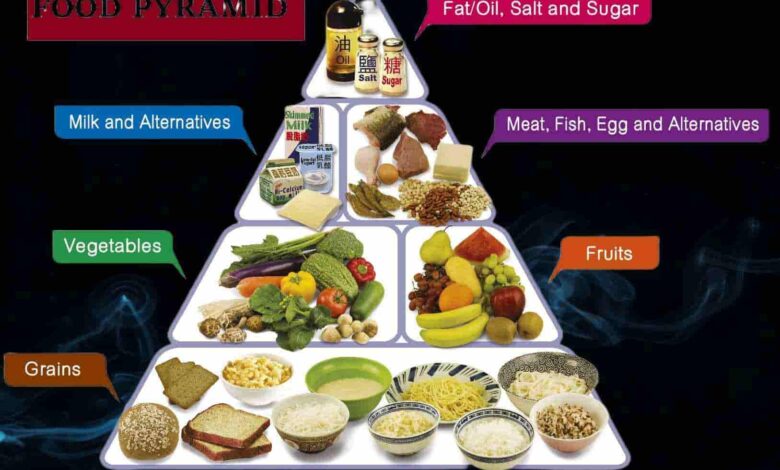Tracing the Unique Food Pyramid Evolution Since 1974: The Dynamics of Dietary Guidance
Food pyramid evolution

The food pyramid evolution commenced from first pyramid concept published in Sweden in 1974. Food pyramid evolution further progressed to Food Pyramid Guide or Eating Right Pyramid concept by United States Department of Agriculture in 1992. Food pyramid evolution further transform into My Pyramid concept in 2005 and finally it is replaced with My Plate Concept in 2011.

The concept of the food pyramid surfaced in the early 20th century. It aimed to simplify dietary recommendations for the public. Initially, it presented a basic hierarchy of food groups. Over time, the food pyramid has become an icon in nutrition education. Its structure has evolved to reflect changing dietary guidelines. Detailing the food pyramid’s evolution reveals its response to new nutritional science.
Analyzing the food pyramid evolution begins with its inception. The pyramid’s earliest form grouped foods by nutrient type. Knowledge about essential vitamins and minerals was expanding. This classification system aimed to promote balanced meals.
The pyramid encouraged regular consumption of certain food categories. It established visual proportions for the average person. The base included staples like bread and grains. As the model ascended, food portions decreased. This effectively communicated the concept of moderation.
Research in epidemiology and nutrition instigated the next phase of the food pyramid evolution. Dietary fats and their impact on health became a focal point. The original pyramid faced criticism for insufficiently differentiating between food types.
For instance, not all fats were harmful. This spurred a revision to encapsulate this nuance. The updated pyramid delineated between saturated and unsaturated fats. Recommendations for protein sources also became more specific. The inclusion of plant-based proteins like legumes offered broader dietary options.
My Plate: A Transformed Form of Food Pyramid Evolution
By the 21st century, the food pyramid had further transformed. The introduction of ‘My Pyramid’ cemented this progress. This new design prioritized physical activity alongside nutrition. It adapted to visually represent lifestyle choices. Its color-coded stripes conveyed variety and proportion. Guidance was personalized.
Individuals could adapt the pyramid to their specific needs. This iteration emphasized that there was no one-size-fits-all diet. The food pyramid evolution had reached a point of individual-centric guidance.
Despite ‘My Pyramid’s’ improvements, the food pyramid’s journey was not over. Experts recognized the need for clearer public messaging. In place of the pyramid, ‘My Plate’ emerged. This new diagram partitioned a plate into relevant food group sections.
It arguably presented a more intuitive guide to healthy meals. This transition from a pyramid to a plate highlighted a key shift. The food pyramid evolution had responded to public feedback. It aimed for simplicity and relatability in dietary counseling.
The food pyramid evolution encapsulates a critical lesson. Nutritional guidelines are ever-changing. They are shaped by the continual advancement of scientific knowledge. Each iteration of the pyramid served its era. It synthesized current insights into practical advice.
The food pyramid’s evolution is reflective of broader societal changes. It incorporates increased awareness about food sources and sustainability. It also acknowledges diversity in dietary habits and health needs.

Food Pyramid Evolution and Dynamics of Dietary Guidance
Nutrition science, like any field of study, evolves constantly. The concept of a food pyramid, first introduced decades ago, reflects changing dietary guidelines. This model, a visual representation of how food types contribute to a balanced diet, has undergone significant changes.
These alterations mirror our expanding knowledge about nutrition and its impact on overall health. Understanding this evolution is crucial for making informed food choices.
Initially, the food pyramid categorized foods into hierarchical sections. Starchy carbohydrates formed the base, suggesting high consumption. Conversely, fats and sweets occupied the apex, recommending limited intake. This hierarchy aimed to simplify the complex topic of nutrition. It helped individuals visualize and thus better manage their diets. However, with time, these simplifications proved to be somewhat problematic.
Criticism arose due to oversimplified messages. The food pyramid suggested quantity without enough emphasis on quality. It did not distinguish between whole grains and processed carbs or healthy and unhealthy fats. Given such feedback, nutritionists called for an update. This led to the pyramid’s first major revision. The modified version underscored the importance of exercise and variety. Whole grains now took precedence over refined counterparts, promoting nutrient density.
Subsequent research led to further refinements of the food pyramid. The move towards individualized nutrition advice became apparent. Concerns over non-communicable diseases necessitated more nuanced dietary recommendations. This shift in focus acknowledged that no one-size-fits-all model is adequate for the diverse needs of a population. Hence, the pyramid began to incorporate personalized dietary tips.
The most recent depiction of the food pyramid evolution includes color-coded vertical wedges. Each color represents a food group, advocating a balanced approach to meal planning.
Notably, the incorporation of plant-based proteins next to animal proteins marked significant progress. This acknowledged the role of vegetarian and vegan diets in promoting health. Moreover, the interactive nature of modern guides allows individuals to tailor food choices according to specific health goals.
In parallel with the food pyramid evolution, public perception of diets also transformed. Awareness about the connections between diet, health, and environmental sustainability grew. Food choices now consider ecological footprints alongside physical well-being.
This heightened consciousness influences the ongoing evolution of dietary advice. Moving forward, the food pyramid will likely continue to adapt, integrating comprehensive insights from various scientific domains.
The food pyramid’s evolution illustrates the dynamic nature of nutritional science. It reinforces the need for adaptability in dietary recommendations. Individuals can thus remain confident that their food choices, informed by the latest evidence, contribute to a healthier lifestyle. The next iterations of the food pyramid will doubtlessly reflect further scientific discoveries, public health trends, and global challenges.
Conclusions
The evolution of the food pyramid represents more than mere shifts in nutritional guidelines. It signifies a responsive dialogue between science and society. Each stage of its development encourages us to re-evaluate our food choices, fostering healthier habits amid a constantly changing nutritional landscape. Understanding this evolution equips us with the knowledge to navigate the complexities of diet and nutrition for better health outcomes.
Finally, the food pyramid’s evolution is marked by adaptation and personalization. It has navigated through emerging research and public health trends. As an emblem of dietary guidance, it’s been reformed to remain relevant.
Today’s dietary frameworks honor the complexity of nutrition science. They suggest that future enhancements will follow this trajectory. Thus, tracing the food pyramid evolution provides important perspectives. It offers a narrative on how public health strategies evolve to better serve society.






